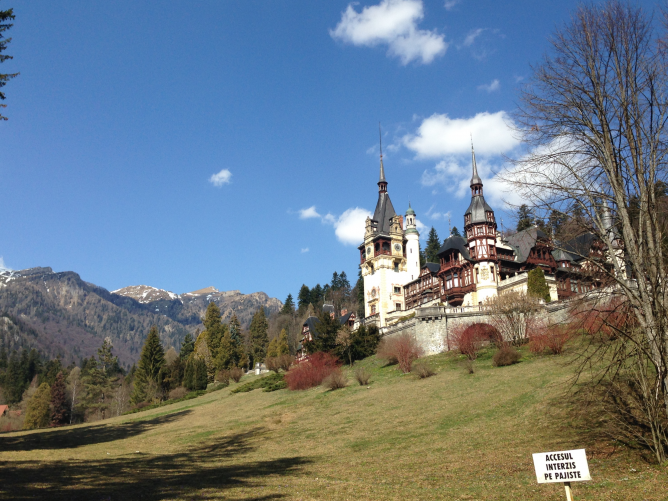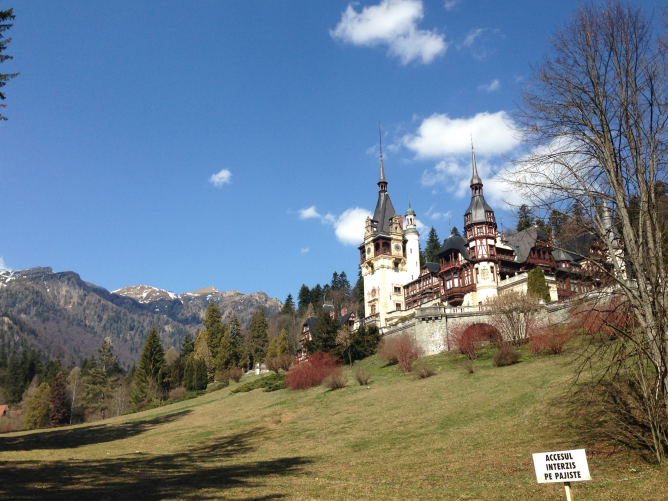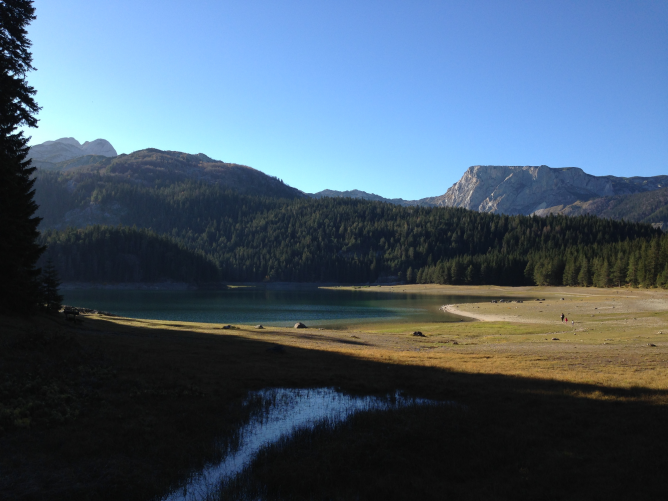
Anyone who has gone near the Balkan peninsula knows
that there is no shortage of absolutely stunning locations in the area. You
will find something gorgeous and fascinating, whether you’re looking for
nature, history, or culture. The mountainous terrain and the diverse, if sometimes
troubled, history has given the region a wealth of options for any traveler. For inspiration, we check out 12 great places to start.

Split | Croatia
This city on the Adriatic coast is the perfect combination
of natural and manmade beauty. In the year 305, the Roman emperor Diocletian
chose it as his retirement home, building a palace that is now simply a part of
the fabric of the city’s historic center. Your options for sightseeing are
varied and equally gorgeous – you can stroll along the Riva on the waterfront,
hike up one of the neighboring hills to get a view over the city, or relax on
the beach and watch the water lap onto the stony beaches.
Lake Bled | Slovenia
Lake Bled is the stuff of fairy tales. A deep blue lake
emerging from the surrounding Alps with a picturesque church on an island in
the middle, this Slovenian gem has become one of the country’s main sights. You
can rent a rowboat to get out to the island in the middle, where it’s quite
likely that you’ll see a wedding. According to tradition, it’s good luck for
the groom to carry the bride up the steps so that they can ring the church bell
together and then make a wish inside the church.
Gjirokastra | Albania
Known as the ‘City of Stone’, Gjirokastra in Southern
Albania is UNESCO listed because of the Ottoman style houses that you can find
throughout the city. While only having just under 20,000 inhabitants,
Gjirokastra is home to a sizeable Greek minority, in addition to being the
birthplace of two of the most internationally well-known Albanians: Enver
Hoxha, the communist leader, and Ismail Kadare, the novelist and
once-dissident. Although the area has been inhabited since at least the Bronze
age, most of the buildings are from the 17th and 18th centuries.

Subotica | Serbia
In typical Balkan fashion, Subotica has no majority ethnic
group, but is instead made up of a healthy mix of Hungarians, Serbs, Croats and
several others. It is the seat of the Vojvodina region in Serbia, which is
largely Hungarian, so it is the home of several famous Hungarians, like the
writer Dezso Kostolanyi, or the original Dracula, actor Bela Lugosi. The city
has a long and complicated history of many empires moving in and out, but the
notable Art Nouveau architecture comes from the period of the Austro-Hungarian
monarchy.
Plitvice Lakes | Croatia
This UNESCO World Heritage Site is also the biggest national
park in the country. It is made up of a series of interconnected lakes that
cascade into each other, only separated by natural travertine dams that are
constantly being built up and brought down by the water and the minerals that
it carries. The colors, which can be striking blues and greens, are constantly
changing based on the algae and mineral content and the quality of the light.
Several endemic animal species, like the lynx, also still live here.
Peles Castle | Romania
Translyvania gets a dark reputation because one of its
legendary residents, but you’ll change your mind about the region once you’ve
seen the delicately gorgeous Peles Castle emerging out of the forests and
mountains. The Neo-Renaissance style is far more Da Vinci than Dracula. Built
by the Romanian monarchs in the 1870s, this was also the first castle to be
fully fitted for electric power. Only a short drive away from the charming
Romanian city of Brasov, this is well worth a trip out – and you can swing by
Dracula’s Bran Castle on the way.

Visoki Dečani | Kosovo
This Serbian Orthodox Christian monastery in Kosovo houses
the largest Orthodox church in the Balkans and is worth a visit just to try to
understand the complicated religious and ethnic history of the region. However,
the main reason for its inclusion on the UNESCO list is the frescos that
decorate the interior of the church. They make up the largest surviving
collection of Serbian medieval art, and they depict scenes from the Bible,
members of noble families, and a plethora of Orthodox saints, among other
things.
Lake Ohrid | Macedonia and Albania.
Stunningly beautiful though it is, Lake Ohrid is most
important as a nature reserve. As one of the oldest and deepest lakes in
Europe, it is home to over 200 endemic species that make up entire food chains
and that have remained remarkably undisturbed by the incursion of non-native
species. People have inhabited the shores of the lake on all sides since the
Bronze Age, and it is now part of both Macedonia and Albania. The combination
of the surrounding mountains and the bright color of the lake will truly make
you feel connected with nature.
Ljubljana | Slovenia
Another example of a city with numerous visible influences,
the best way to encapsulate the feeling of Ljubljana is to imagine a former
Hapsburg city on the Mediterranean. The best way to enjoy the laid-back yet
lively feel of the city is to sit in one of the cafes on the waterway in the
center and take your time with a nice glass of Slovenian wine. Many of the
buildings throughout the city are the work of noted Slovene architect Jože
Plečnik. He did not, however, design the Vienna Secession-style Dragon Bridge,
where you can find four of those winged symbols of the city.

Mostar | Bosnia and Herzegovina
The Old Bridge in Mostar is one of the many (albeit
reconstructed) remnants of the long Ottoman control of the region. It spans the
Neretva River, and was a great architectural marvel when the Ottomans first
built it in 1558. However, the city suffered a great deal of damage during the
Bosnian war of the 1990s, so afterwards, many countries devoted their own funds
to rebuilding the bridge and its surrounding areas. The whole city is now one
of Bosnia and Herzegovina’s major cultural attractions.
Durmitor National Park | Montenegro
While much of Montenegro is covered in mountains, Durmitor
is the center of mountain tourism in the country, be it for hiking, skiing, or
simply going to enjoy the views. Numerous lakes dot the landscape, and in the
autumn the whole park lights up with the changing colors of the leaves. One
part of the park to check out is Tara River Canyon, which is the second biggest
in the world after the Grand Canyon. You’ll certainly not run out of scenic
outlooks when you’re driving around Durmitor.
Nessebar | Bulgaria
This small city on the Black Sea is another good example of
how nature and culture can come together to create truly wondrous sites.
Nessebar has been inhabited for about 3000 years by various cultures and
empires, and their remnants are sprinkled across the city in the form of
buildings from different eras and architectural styles, especially a large
collection of Eastern Orthodox churches. Its position on the coast, of course,
with one half of the city jutting out on a thin peninsula into the sea, also contributes to its status.
By Lani Seelinger
